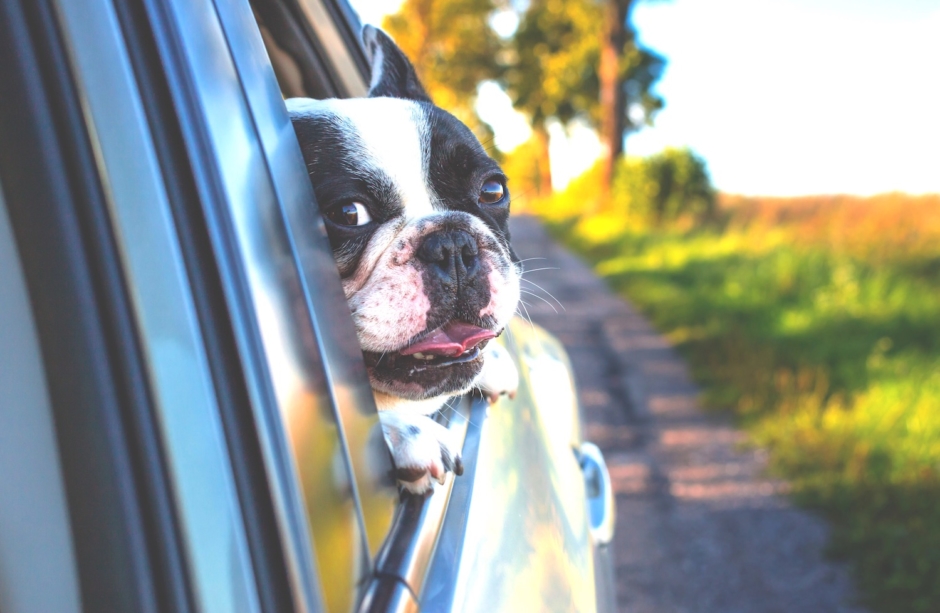Testing Dog Article
5 Simple Hacks for Dog-Parent when travelling with Pets
As careers progress, many of us consider potential changes and new opportunities. Sometimes, a new job or simply moving to a new company just doesn’t quite cut it. We’ve all heard of that person who took a sabbatical; whether it was 6 months, a year or even longer. We dream of how incredible the experience would be and then dampen the idea by thinking about the realities. The house, the dog? What happens with all of them? Well, even with a dog in tow, it’s more than possible to take that sabbatical. We’ve put together some handy tips to make taking your pet on a sabbatical as stress-free as possible.
The Move
To give you the best chance of helping your dog settle in a new environment, we will quickly re-visit the idea behind dog socialization.
When you are raising a puppy, you introduce him to the world, you praise and reward him when he responds positively to experiences, for example, a calm response or simply shows interest, indifference and walks away.
You repeat these experiences, so he learns that the bins on the corner of the street aren’t going to jump out at him and he simply walks past them.
Like humans, the more we repeat an action, the easier or more habitual it becomes. How many of you drive places without even thinking about the route – you just get there?
We need to use this idea when moving to a new environment. Where possible, take your dog with you when you are visiting your new home. Reward him as he goes through the door, let him explore, play a game in the yard and practice some commands in the yard. Don’t organise for any work to be carried out at the same time, you want him to be stress-free and calm, not barking at work men or wondering who these decorators are. Leave and return a number of times before the moving date.
Some owners choose to put their dog in day care or in the care of a friend or relative on the day of the move, this is entirely your choice. But if you have ensured the yard and the new home is secure, you may as well start as you mean to go on and take him along.
Set his bed up immediately and a safe area for him to retreat to, if he is crate trained, even better. He’ll know that no matter what, he has his safe place if he starts to get overwhelmed or unsettled. Give him a chew or food puzzle to keep him occupied if he’s getting a little stressed. You’ll notice this by excess pacing, yawning, circling, pining or whining.
The Adjustment

You’re going to have to give Fido some time to adjust to the new home, just like you will.
The new house will be full of new smells; especially if the previous occupants had pets. Fido may seem to be more active than usual – this is to be expected. The change in environment will create a stress response in his body.
Just like humans, when dogs are stressed, their body releases certain hormones. Cortisol is released to help the body respond to the perceived threat, so it directs blood flow to muscles for example. Adrenaline is also released which raises the heart rate and blood pressure. These hormones help Fido in fight-flight-freeze situations, but no so much in a prolonged situation.
Watch for signs that Fido isn’t coping with the change. You may notice more active behaviour, almost hyper-aroused. He may become withdrawn and hide. You may also notice other physical symptoms like diarrhoea (adrenaline reduces blood flow to the intestine which causes diarrhoea), mange (cortisol affects the immune system which makes them more susceptible to infections like mange), or issues with urination of defecation (excess or withholding). If you are concerned about his health, seek veterinarian attention.
Consider using plug-in pheromone diffusers to help settle Fido or jackets or body wraps to help reduce his stress levels.
Try to keep his routine as similar as possible – go for walks and feed him at similar times. Be patient and expect some teething problems. Pun intended.
When dogs are stressed or anxious, they can become destructive; not ideal if you’re renting temporary accommodation or need to leave Fido for short periods whilst you deal with sabbatical related business.
If Fido is crate trained, this is the safest place for him to be whilst you can’t supervise him. He knows it’s his safe place and you can be confident that he won’t hurt himself (or the house) in your absence.
Crate Training
Firstly, just build the crate and place some bedding inside. Let Fido sniff it and explore. Intermittently, through treats inside, but don’t close the door.
Occasionally, give Fido a chew or a food puzzle in the crate, again, keep the door open. He can choose to come and go as he pleases.
You may want to start feeding Fido in the crate, again making a positive association.
Once Fido is happy spending time in the crate, close the door for the duration of the chew, puzzle or food.
Only when you are confident Fido is happy and settled in his crate, you can start leaving him unsupervised.
The bonus with being crate trained is it’s transferable – no matter when you or Fido go, he knows that it’s his safe place, it’s his. If you intend to move several times during the sabbatical, it could be your saving grace!
Many dogs will tolerate moving to a new home or environment with no issues; they will be excited for the adventure. But you never know until you get there. Be patient and expect teething problems. Involve Fido in the move as much as possible, let him make positive associations and understand it’s nothing to be fearful of. Keep his routine the same where you can but most of all, stay calm and enjoy it. Fido will most likely follow your lead!
Extra follow up questions from Nadege and his answers to incorporate in the draft
- Because our travelers move to a temporary home usually overseas, they won’t have the opportunity to acclimatize their dogs slowly by visiting the house several times like you advised before moving in. (fyi – hey don’t re-decorate the new home since they “borrow” someone else’s home for a few months.) It may be a good idea to compare what would happen in the best case scenario where the pet owner moves to a new home with the actual SabbaticalHomes scenario where the pet owner moves to a temporary home (even a temporary country) all at once. Could you address that?
- If you are moving overseas and unable to acclimatize your dog without any initial visits, don’t panic, just be more patient when you do move. Just as you will be keen to explore the house and the area, so will he. Let him and be patient. Reward and praise as you are going through the door as above, play and just take some time out of what will be a chaotic day!
- In the adjustment section, you mention a topic very dear to me and our community. The potential damage caused to the temporary home by a dog who is stressed. Can you expend even further on the specific steps the owners can take to prevent or minimize damage?
- Again, in keeping destruction to a minimum you need to keep Fido’s stress levels low and encourage acceptable behaviour. Provide safe chew toys for Fido to get stuck into. You could consider swapping his meals into a slow feeder toy and use brain games to keep him occupied in your absence. A great example is cutting a kitchen towel into three lengths. Plait them together and tie at the end. Put treats into the plait so he has to figure out how to get them. The longer and tighter the plait, the harder the treats are to get and the busier Fido will be!
- Could you give our readers some tips on how to best handle the actual trip? How can the pet owner make the actual trip less stressful to the pet?
The day has arrived, you’re packing up the car and ready for your new adventure. Whilst for some this may be a short trip, for some it will be a few hours road trip, if not even more if you are heading overseas. When taking Fido in the car, ensure he has plenty of space. He should easily be able to stand up, sit and lay down. He shouldn’t have any issues moving around. Remember to pack the basics. Take water for the journey and his food if it’ll span over mealtimes. Plan your route and figure out where is best to stop for toilet breaks. Ideally quieter truck stops with an open space you can take Fido on his lead to do his business. Remember your poo bags! Ideally, you would have already tackled the travelling part with practicing short journeys in the car. When in the car, keep a listen out for any whining/crying, or if you have passengers ask them to keep an eye on his behaviour. If he is getting stressed; licking his lips, yawning, panting or circling etc. plan a stop soon. A walk in the fresh air works wonders for humans and dogs alike! There are also songs that are specifically created to help reduce stress in dogs; it could be worth having this as your travelling soundtrack for those extra stressed dogs!
New Heading
She was quick to share her positive home sharing experiences with Nadege “For ten years I have enjoyed Sabbatical Homes because I have met the most wonderful scholars from around the world.” A heartwarming thing to hear from someone who has been using the site for as long as she has. She went on to explain the kind of relationship she developed with her scholarly guests “We see each other as much or as little as the guest prefers, we converse, we have a glass of wine…They are absolutely unobtrusive.” As we all know it can be difficult to find a comfortable and respectful place to stay while away from home, it is this kind of relationship between a Scholarly host and guest that makes Sabbatical Homes so special. She urges everyone to “not only be a guest of Sabbatical Homes, but also to be a host of Sabbatical Homes.”
Most importantly, Angela has founded The Joe and Laura Iovino Foundation, a nonprofit dedicated to the children in DC most effected by poverty and violence, through the development of valuable resources for their continual academic and emotional growth outside of school as well as scholarships to attend private high schools. The foundation “provides impoverished children ages 10-14 from Ward 8 Anacostia, Washington DC with 3 consecutive residential summer camps in technology, the arts and athletics. The foundation sends 12 students per year and collaborates with schools to sustain academic year STEM activities to bridge the gap between summers.”
“Dr. Iovino works with school principals whose students live in Ward 8 to identify the poorest children affected by trauma from violence while in good academic standing: Howard University Middle School; Center City Public Charter Schools (Capitol Hill and Trinidad); and Garfield Preparatory Elementary School. The Berkeley Center at Georgetown University declares that one of three children in Washington DC is poor. A staggering statistic which points to the aggressive nature of poverty in the nation’s capital.”
Related Articles: Link to document / pdf






